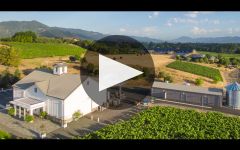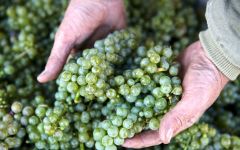Gamble Family Vineyards Napa Valley Cabernet Sauvignon 2017



Product Details
Your Rating
Somm Note
Winemaker Notes
Open a bottle and enjoy aromas of black raspberry, ripe strawberry and cassis with hints of cherry pie, graham cracker and espresso beans. The palate offers flavors of brambleberry, blueberry, nutmeg spice and brown sugar. Its moderate alcohol, firm acidity and velvety tannins help to frame a delicious, flavor-packed finish.
Other Vintages
2018-
Robert
Parker -
James
Suckling -
Wine
Enthusiast
-
James
Suckling -
Robert
Parker
-
Tasting
Panel -
Wine
Spectator
-
James
Suckling -
Wine
Enthusiast -
Robert
Parker
-
James
Suckling -
Wine &
Spirits








With 100 years of agriculture in Napa, it comes as no surprise that the heart and soul of Gamble Family Vineyards is deeply rooted in the soil. Founded by third-generation farmer Tom Gamble in 2005, Gamble Family Vineyards owns prime estate vineyards in many of Napa’s most respected AVAs—Oakville, Mt. Veeder, Rutherford and Yountville. Its winery and by invitation-only tasting room have a quiet presence, sitting modestly in an isolated nook off Highway 29 in the heart of Napa Valley’s Oakville AVA. Set back from the main road, Gamble’s mission here is to carry on the heritage of farming that his ancestors sowed when they came to Napa as cattle ranchers in 1916. They left with him a legacy of deep and abiding affinity for the land from which came not only their livelihood, but also a life full of purpose.
Having shadowed his father on the family ranches as a child, Tom has had a hand in the land since an early age. In 1981, at the age of 20, he purchased his first vineyard with several partners, making him the first Gamble to begin growing grapes commercially. “Given this legacy, one does not continue farming for dispassionate reasons alone—there are easier ways to make a living. And thus, taking the next step and putting my name on a bottle of wine does not come lightly,” says Gamble.
Winemaker Jim Close follows Gamble Family Vineyards’ mission of producing wines that seamlessly bring together elegance, balance, nuance, with good structure and moderate alcohol, while embracing and highlighting the characteristics Napa Valley terroir imparts on the wines. Jim Close began his winemaking career in the southern Languedoc region of France, and has made every bottle of Gamble Family Vineyards wine since 2005.

One of the most prestigious wines of the world capable of great power and grace, Napa Valley Cabernet is a leading force in the world of fine, famous, collectible red wine. Today the Napa Valley and Cabernet Sauvignon are so intrinsically linked that it is difficult to discuss one without the other. But it wasn’t until the 1970s that this marriage came to light; sudden international recognition rained upon Napa with the victory of the Stag’s Leap Wine Cellars 1973 Cabernet Sauvignon in the 1976 Judgement of Paris.
Cabernet Sauvignon undoubtedly dominates Napa Valley today, covering half of the land under vine, commanding the highest prices per ton and earning the most critical acclaim. Cabernet Sauvignon’s structure, acidity, capacity to thrive in multiple environs and ability to express nuances of vintage make it perfect for Napa Valley where incredible soil and geographical diversity are found and the climate is perfect for grape growing. Within the Napa Valley lie many smaller sub-AVAs that express specific characteristics based on situation, slope and soil—as a perfect example, Rutherford’s famous dust or Stags Leap District's tart cherry flavors.
